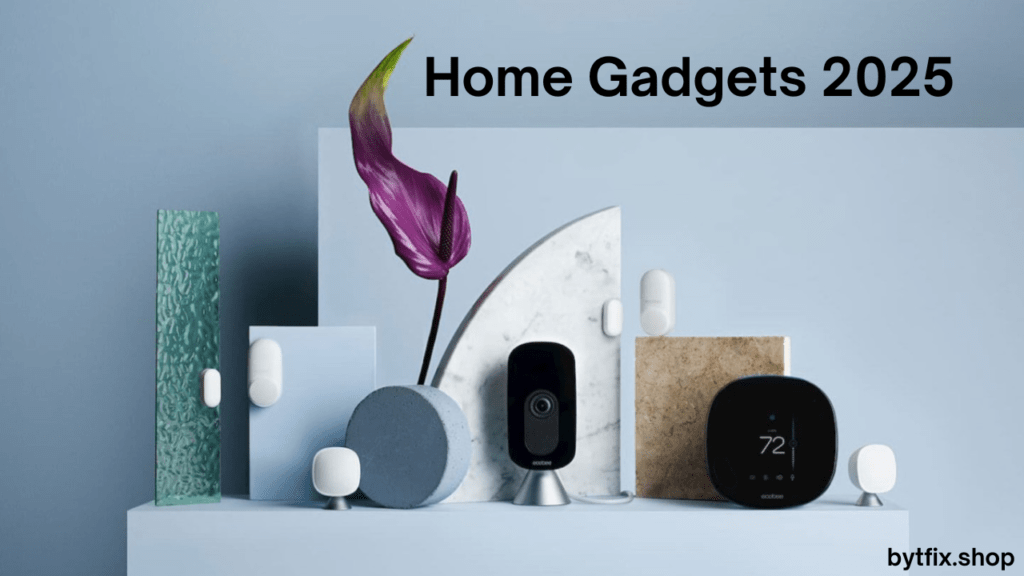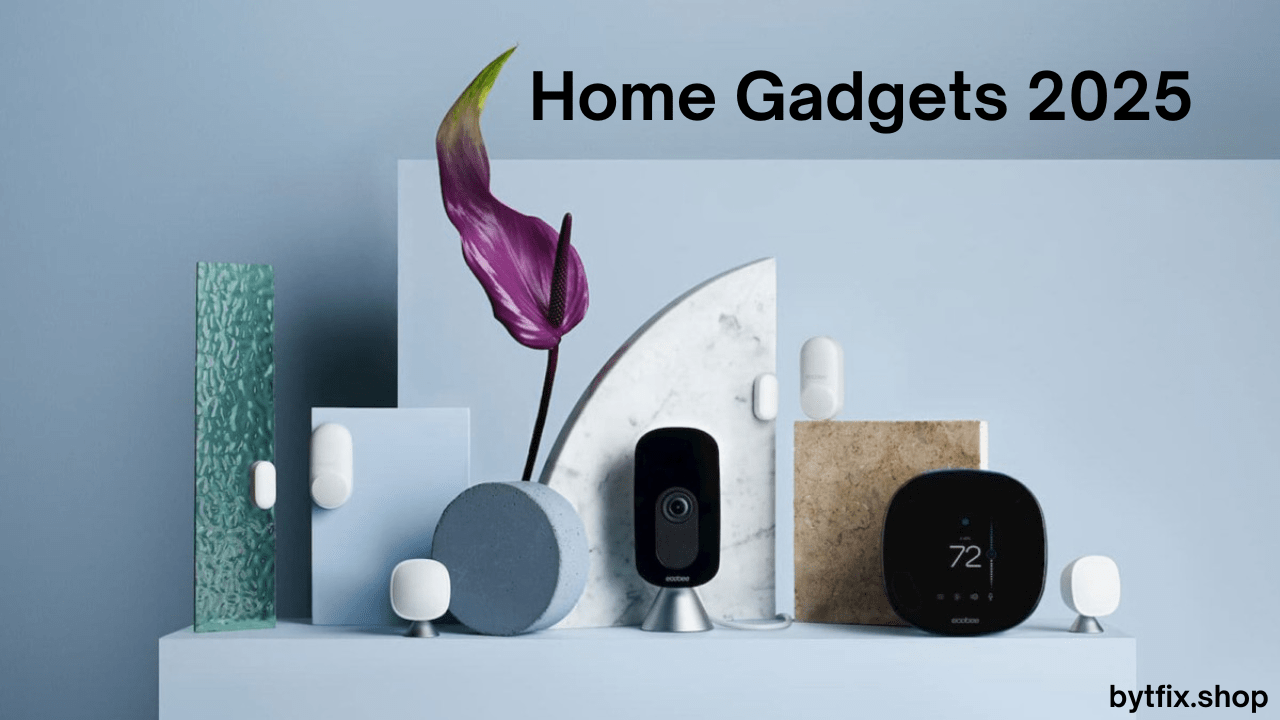In recent years, smart homes have transitioned from futuristic concepts to everyday realities. In 2025, the integration of advanced technology into our living spaces is more accessible and sophisticated than ever before. But how do you set up your own smart home? In this article, we will walk you through the essential steps, from understanding the key components to making your home smarter and more efficient. Whether you’re a tech enthusiast or someone new to the idea, this guide will help you create the perfect smart home.

Introduction
A smart home is no longer a luxury; it’s becoming an essential part of modern living. With the rise of smart devices, you can control almost everything in your home, from lighting to security, temperature, and entertainment, all through your smartphone or voice commands. But with so many options available, setting up a smart home can feel overwhelming. The good news is that in 2025, smart home technology is more user-friendly, affordable, and easier to integrate than ever before. Whether you want to enhance security, reduce energy consumption, or create a seamless living experience, setting up a smart home is the solution.
Understanding the Basics of Smart Home Technology
Before diving into the setup process, it’s important to understand what makes a home “smart.” At its core, a smart home consists of devices and systems that can connect to the internet and communicate with one another. These devices typically fall into a few categories:
- Smart Lighting: These are lights that can be controlled remotely, adjusted for brightness, or even change colors. Brands like Philips Hue and LIFX offer a wide range of options.
- Smart Thermostats: Devices like Nest and Ecobee allow you to control your home’s temperature remotely and adjust it according to your habits, saving energy and reducing bills.
- Smart Security: This includes smart cameras, doorbells, and locks. Products such as Ring and Arlo provide advanced security features, including motion detection, remote access, and real-time alerts.
- Smart Speakers: Devices like Amazon Echo or Google Home enable voice control of other smart devices in your home, making it easier to control your environment with simple commands.
- Smart Appliances: These include devices like refrigerators, washing machines, and ovens that can be controlled remotely or automated to perform certain tasks.
The key to creating an efficient smart home is choosing devices that work well together and complement each other. You want devices that can communicate seamlessly, and that’s where smart hubs and voice assistants come in.
Step 1: Choose the Right Smart Home Hub
A smart home hub is the central controller that connects all your smart devices. Many smart home systems, such as Amazon Alexa, Google Assistant, and Apple HomeKit, function as hubs. They allow you to control all your devices from one interface, whether through voice commands or an app.
When selecting a hub, consider the following factors:
- Compatibility: Make sure the hub is compatible with the devices you plan to use.
- Ease of Use: Choose a system that is easy to navigate, with a user-friendly app or voice assistant.
- Future-Proofing: Pick a hub that supports future upgrades and additional devices.
Step 2: Select and Install Smart Devices
Once you have your hub, it’s time to start selecting your smart devices. When adding devices to your home, think about your priorities—whether it’s energy efficiency, security, or convenience. Below are some essential devices you may want to consider:
- Smart Lighting: Installing smart bulbs is an easy way to start. You can change the ambiance of your home instantly or set schedules to turn lights on and off automatically.
- Smart Thermostats: A smart thermostat like Nest learns your schedule and adjusts the temperature accordingly, ensuring comfort while saving energy.
- Smart Security: Adding cameras or a doorbell with a camera, such as Ring, enhances your home’s security. These devices send alerts and allow you to monitor your home remotely.
- Smart Speakers: A smart speaker like Amazon Echo or Google Nest Hub enables you to control your home hands-free and access information, weather updates, and more.
- Smart Plugs and Switches: These are great for turning ordinary appliances into smart devices. Simply plug them into an outlet, and you can control your appliances via smartphone or voice commands.
For installation, follow the manufacturer’s instructions for each device. Many devices are designed for easy installation, and most have user-friendly apps to guide you through the process.
Step 3: Ensure Security and Privacy
One of the most important aspects of setting up a smart home is ensuring that your devices are secure. Since most smart home devices are connected to the internet, it’s essential to take steps to protect your home from cyber threats. Here are some tips for securing your smart home:
- Use Strong Passwords: Avoid using default passwords. Instead, choose strong, unique passwords for each device.
- Enable Two-Factor Authentication: Many smart home platforms offer two-factor authentication for an added layer of security.
- Update Software Regularly: Ensure that your devices are running the latest software and firmware updates to protect against vulnerabilities.
Additionally, consider using a separate Wi-Fi network for your smart home devices. This will help isolate them from your main network and prevent unauthorized access.
Step 4: Automate and Integrate Devices
Once your devices are installed and secure, the next step is to integrate and automate them. Smart home automation allows you to set routines and schedules for your devices, making your home more efficient.
For example, you can set your thermostat to adjust the temperature when you leave for work, or program your lights to turn off automatically when you go to bed. Many systems also allow you to create custom routines, such as turning on the lights and playing music when you enter a room.
If you use a voice assistant like Alexa or Google Assistant, you can also control your devices with voice commands, creating a hands-free experience.
Step 5: Optimize Energy Efficiency
One of the main benefits of a smart home is the ability to optimize energy usage. Smart thermostats, lights, and appliances help reduce waste by adjusting to your schedule and minimizing energy consumption when devices are not in use.
For example, you can program your thermostat to lower the temperature while you’re away, and smart lights can be scheduled to turn off automatically when not in use. Some smart home systems also provide energy consumption data, allowing you to track your usage and make adjustments for greater efficiency.
Conclusion
Setting up a smart home in 2025 is more accessible than ever before, with a wide range of devices and systems that can be easily integrated into your lifestyle. By choosing the right smart hub, selecting compatible devices, ensuring security, and automating your home, you can create a smarter, more efficient living space. Not only will your home be more convenient and comfortable, but you’ll also benefit from enhanced security, energy savings, and greater control over your environment.
As you embark on your smart home journey, remember that the key is to start small and gradually expand. Focus on devices that meet your specific needs and gradually build a system that works seamlessly for you.
